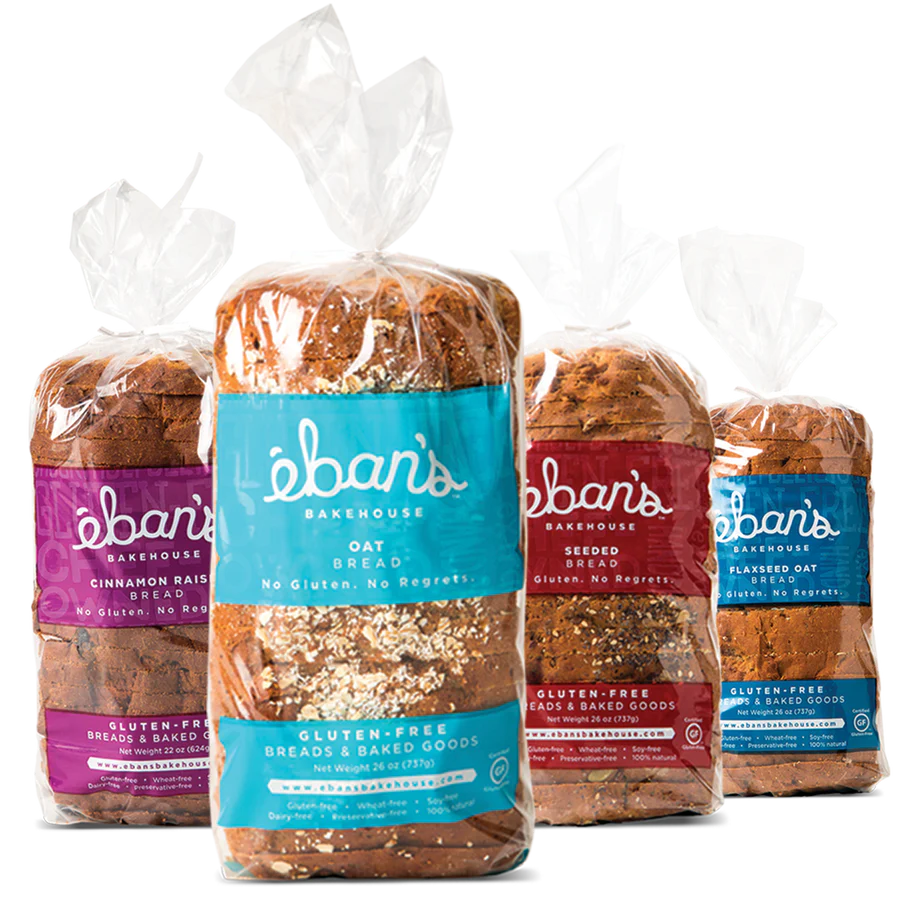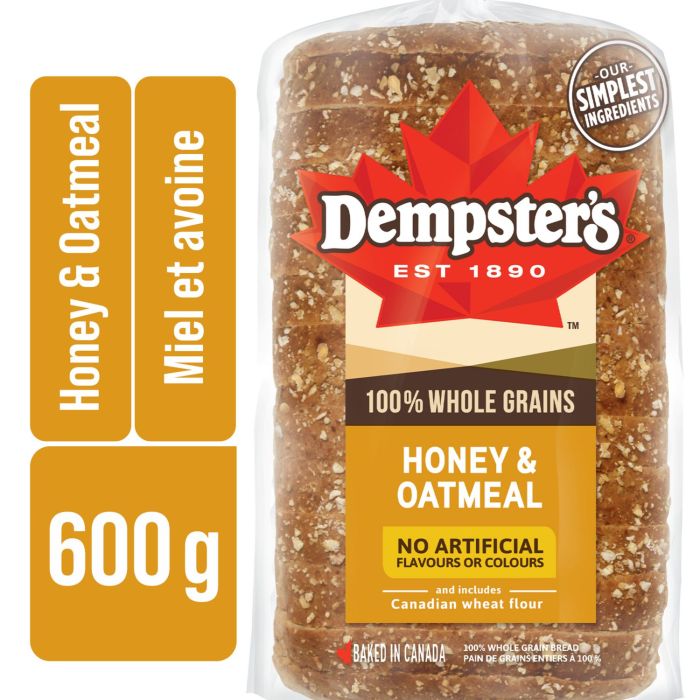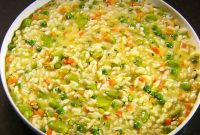Dive into the world of supermarket oat bread, a popular and nutritious choice among bread enthusiasts. With its distinctive taste and texture, oat bread has captured a significant market share, offering a range of health benefits. This comprehensive guide explores the nutritional value, types, production, marketing, and consumer perception of supermarket oat bread, providing valuable insights into this versatile and delicious staple.
From its humble beginnings to its modern-day popularity, oat bread has evolved to meet the demands of health-conscious consumers. Its unique combination of fiber, vitamins, and minerals makes it a smart choice for those seeking a balanced diet.
Overview of Supermarket Oat Bread
Supermarket oat bread refers to commercially produced bread that contains a significant proportion of oats in its composition. It is characterized by its distinct flavor, texture, and nutritional value.
Oat bread has gained popularity due to its perceived health benefits and its versatility as a breakfast or snack item. It holds a notable market share in the bread category, particularly among health-conscious consumers.
History of Oat Bread
The origins of oat bread can be traced back to ancient times, with evidence suggesting its consumption in various cultures. In the 19th century, oat bread became more widely available in commercial bakeries and gained popularity as a nutritious and affordable food source.
Nutritional Value of Supermarket Oat Bread
Supermarket oat bread offers a nutritious alternative to other types of bread. It contains a blend of complex carbohydrates, dietary fiber, and essential vitamins and minerals. Compared to white bread, oat bread has a lower glycemic index, which means it releases energy more slowly and helps regulate blood sugar levels.
Carbohydrate Content
Oat bread is a good source of complex carbohydrates, which provide sustained energy throughout the day. These carbohydrates are slowly digested, helping to keep you feeling full and satisfied.
Dietary Fiber
Oat bread is rich in dietary fiber, which is essential for maintaining a healthy digestive system. Fiber helps regulate bowel movements, reduce cholesterol levels, and promote a feeling of fullness.
Vitamins and Minerals
Oat bread contains various vitamins and minerals, including:
Vitamin B1 (Thiamin)
Essential for energy production and nerve function
Vitamin B2 (Riboflavin)
Supports cell growth and energy metabolism
Vitamin B6 (Pyridoxine)
Involved in amino acid metabolism and immune function
Iron
Necessary for oxygen transport and red blood cell production
Magnesium
Supports muscle function and nerve transmission
Health Benefits
Consuming oat bread regularly can provide several health benefits:
Improved Heart Health
The dietary fiber in oat bread can help lower cholesterol levels and reduce the risk of heart disease.
Stable Blood Sugar Levels
The low glycemic index of oat bread helps regulate blood sugar levels, making it a suitable option for individuals with diabetes or prediabetes.
Reduced Risk of Digestive Problems
The fiber in oat bread promotes regular bowel movements and helps maintain a healthy digestive system.
Weight Management
The complex carbohydrates and fiber in oat bread can help you feel full and satisfied, which may support weight management efforts.
Types of Supermarket Oat Bread

Supermarket oat bread comes in various types, each with unique characteristics in ingredients, flavors, and textures. These variations cater to different dietary preferences and taste buds.
Whole-Grain Oat Bread
Whole-grain oat bread is made from whole oats, including the bran, germ, and endosperm. This type of bread is rich in fiber, vitamins, minerals, and antioxidants. It has a hearty texture and nutty flavor.
Multigrain Oat Bread
Multigrain oat bread combines oats with other grains, such as wheat, rye, and barley. This blend creates a bread with a complex flavor and a slightly denser texture compared to whole-grain oat bread. It offers a wider range of nutrients due to the inclusion of multiple grains.
Quick Oat Bread
Quick oat bread is made with rolled oats that have been finely ground into a flour-like consistency. This results in a bread with a softer and more crumbly texture. Quick oat bread is often sweeter than other types of oat bread and may contain additional ingredients like honey, raisins, or nuts.
Steel-Cut Oat Bread
Steel-cut oat bread is made with steel-cut oats, which are coarsely chopped oat groats. These oats retain more of their texture and flavor compared to rolled oats. Steel-cut oat bread has a chewy texture and a slightly nutty flavor. It is a good source of dietary fiber and minerals.
Gluten-Free Oat Bread
Gluten-free oat bread is made with gluten-free oats or oat flour. This type of bread is suitable for individuals with celiac disease or gluten intolerance. It has a lighter texture and a slightly sweet flavor compared to traditional oat bread.
Production and Manufacturing of Supermarket Oat Bread
Supermarket oat bread is a popular and versatile bread that is made with a combination of wheat flour and oats. The production process of supermarket oat bread involves several key steps:
- Mixing:The first step is to mix the ingredients together. This includes wheat flour, oats, water, yeast, salt, and other optional ingredients such as sugar or honey.
- Kneading:Once the ingredients are mixed, the dough is kneaded. This helps to develop the gluten in the flour, which gives the bread its structure.
- Rising:The dough is then allowed to rise in a warm place. This allows the yeast to ferment the dough, which produces carbon dioxide gas. This gas creates bubbles in the dough, which gives the bread its light and airy texture.
- Shaping:Once the dough has risen, it is shaped into loaves. The loaves are then placed in baking pans.
- Baking:The loaves are then baked in an oven. The baking process kills the yeast and sets the gluten. This gives the bread its characteristic crust and crumb.
The ingredients used in supermarket oat bread can vary depending on the brand and recipe. However, the most common ingredients include:
- Wheat flour:Wheat flour is the main ingredient in supermarket oat bread. It provides the structure and texture of the bread.
- Oats:Oats are the second most common ingredient in supermarket oat bread. They add flavor, texture, and fiber to the bread.
- Water:Water is used to hydrate the flour and other ingredients. It also helps to form the gluten in the flour.
- Yeast:Yeast is a fungus that is used to ferment the dough. This produces carbon dioxide gas, which creates bubbles in the dough and gives the bread its light and airy texture.
- Salt:Salt is added to the dough to enhance the flavor of the bread.
There are two main methods of baking oat bread:
- Conventional baking:Conventional baking involves baking the bread in a preheated oven. This method is commonly used in commercial bakeries.
- Artisan baking:Artisan baking involves baking the bread in a wood-fired oven. This method is often used by small-scale bakeries and produces a bread with a more rustic flavor and texture.
The production process of supermarket oat bread is a complex one that involves several key steps. By understanding the process and the ingredients used, you can better appreciate the quality and flavor of this popular bread.
Packaging and Distribution of Supermarket Oat Bread
The packaging and distribution of supermarket oat bread are crucial aspects that impact its shelf life and availability to consumers. Let’s delve into the specifics of these processes:
Packaging
Supermarket oat bread is typically packaged in plastic bags or resealable containers to maintain its freshness and prevent contamination. The packaging material is designed to protect the bread from moisture, air, and light, extending its shelf life.
The packaging often includes a label with essential information such as the ingredients list, nutritional facts, production date, and best-before date. This labeling provides transparency to consumers and helps them make informed choices.
Distribution Channels
Oat bread is distributed to supermarkets through various channels, including direct delivery from bakeries, third-party distributors, and wholesale suppliers. These channels ensure that the bread reaches retail stores in a timely and efficient manner.
Supermarkets may also have their own distribution centers that handle the storage and transportation of oat bread to their individual locations, ensuring consistent availability for customers.
Factors Influencing Shelf Life, Supermarket oat bread
The shelf life of supermarket oat bread is influenced by several factors:
- Packaging:Proper packaging helps prevent moisture loss and oxidation, extending the bread’s shelf life.
- Ingredients:The presence of preservatives and antioxidants in the bread can inhibit mold growth and prolong shelf life.
- Storage Conditions:Keeping oat bread in a cool, dry place, away from direct sunlight, helps maintain its freshness.
Marketing and Advertising of Supermarket Oat Bread

Supermarket oat bread has a wide range of consumers, making it crucial to target the right audience for effective marketing campaigns. Identifying the target market and understanding their needs and preferences enables companies to tailor their marketing strategies accordingly.
Target Audience
- Health-conscious individuals: Oat bread is perceived as a healthier option due to its high fiber content and potential health benefits.
- Weight-watchers: Oat bread is often marketed as a low-calorie and filling option for weight management.
- Convenience-seekers: Supermarket oat bread is readily available and convenient for busy individuals and families.
- Families with children: Oat bread is a nutritious and versatile option for school lunches and family meals.
- Individuals with dietary restrictions: Oat bread is naturally gluten-free and suitable for those with celiac disease or gluten intolerance.
Marketing Strategies
Companies employ various marketing strategies to promote oat bread and reach their target audience:
- Emphasizing Health Benefits:Marketing campaigns often highlight the nutritional value of oat bread, emphasizing its fiber content, potential cholesterol-lowering effects, and overall health benefits.
- Appealing to Convenience:Advertisements showcase the convenience and ease of incorporating oat bread into daily meals, highlighting its versatility and availability.
- Targeting Specific Consumer Groups:Companies may develop tailored marketing campaigns for specific consumer groups, such as health-conscious individuals or families with children, addressing their unique needs and preferences.
- Utilizing Social Media:Social media platforms are used to engage with consumers, share recipes, and promote the health benefits of oat bread.
- In-Store Promotions:Point-of-sale displays, shelf talkers, and sampling campaigns are common in-store promotions used to attract customers and encourage purchases.
Effectiveness of Marketing Campaigns
The effectiveness of marketing campaigns for supermarket oat bread can be measured through various metrics:
- Sales Data:Tracking sales figures before, during, and after marketing campaigns provides insights into their impact on consumer behavior.
- Consumer Feedback:Surveys and customer reviews can provide valuable feedback on the effectiveness of marketing campaigns and consumer perceptions of the product.
- Brand Awareness:Monitoring brand awareness through surveys or social media analytics helps determine whether marketing campaigns have successfully increased brand recognition.
- Market Share:Comparing the market share of a particular oat bread brand before and after marketing campaigns indicates its effectiveness in capturing a larger portion of the market.
By analyzing these metrics, companies can evaluate the effectiveness of their marketing strategies and make adjustments to optimize results and achieve their marketing goals.
Consumer Perception and Feedback of Supermarket Oat Bread
Supermarket oat bread is generally well-received by consumers, with many positive reviews and feedback. Consumers appreciate its taste, texture, and nutritional value. The bread is often described as hearty, flavorful, and filling, with a good balance of sweetness and fiber.
It is also seen as a healthy and convenient option for breakfast, lunch, or snacks.
Strengths of Supermarket Oat Bread
* Taste and texture:Consumers praise the bread’s taste and texture, describing it as flavorful, chewy, and satisfying.
Nutritional value The bread is a good source of fiber, protein, and other essential nutrients, making it a healthy choice for consumers.
Convenience Supermarket oat bread is readily available at most grocery stores, making it convenient for consumers to purchase and enjoy.
Weaknesses of Supermarket Oat Bread
* High sugar content:Some consumers have expressed concerns about the bread’s sugar content, which can be relatively high in some brands.
Limited variety While there are some variations available, the selection of supermarket oat bread is often limited compared to other types of bread.
Price Supermarket oat bread can be more expensive than other types of bread, which may deter some consumers from purchasing it.
Ways to Improve Consumer Satisfaction
* Reduce sugar content:Consumers would likely appreciate a reduction in the sugar content of supermarket oat bread.
Expand variety Offering a wider variety of supermarket oat bread, such as different flavors, textures, and sizes, would increase consumer choice and satisfaction.
Supermarket oat bread can be a great option for those looking for a quick and easy meal. However, if you’re looking for a low-carb alternative, you may want to consider trying a low carb pancakes recipe . These pancakes are made with almond flour and coconut flour, which are both low in carbs and high in fiber.
They’re also gluten-free and dairy-free, making them a great option for those with dietary restrictions. Plus, they’re incredibly delicious and easy to make. So, if you’re looking for a healthy and satisfying breakfast option, give supermarket oat bread a try!
Promote nutritional benefits Emphasizing the nutritional benefits of supermarket oat bread in marketing and packaging can help consumers understand its value as a healthy food choice.
Future Trends and Innovations in Supermarket Oat Bread
The supermarket oat bread market is constantly evolving, with new trends and innovations emerging all the time. One of the most significant trends is the growing demand for healthier bread options. Consumers are increasingly looking for bread that is low in calories, fat, and sugar, and high in fiber.
This has led to the development of a number of new oat bread products that meet these demands.Another major trend is the growing popularity of artisanal bread. Consumers are increasingly interested in bread that is made with high-quality ingredients and traditional methods.
This has led to the growth of a number of small-batch oat bread bakeries.
Innovative New Products and Technologies
In addition to these trends, a number of innovative new products and technologies are also emerging in the supermarket oat bread market. These include:
- Oat bread made with ancient grains, such as quinoa and amaranth
- Oat bread made with sprouted grains
- Oat bread made with sourdough
- Oat bread made with protein-rich ingredients, such as nuts and seeds
- Oat bread made with functional ingredients, such as probiotics and prebiotics
These new products and technologies are offering consumers a wider range of oat bread options than ever before. They are also helping to make oat bread a more nutritious and delicious option.
The Future of the Oat Bread Industry
The future of the supermarket oat bread industry is bright. The growing demand for healthier and more artisanal bread products is expected to continue to drive growth in the market. In addition, the development of new products and technologies is expected to make oat bread an even more attractive option for consumers.As
the oat bread industry continues to grow, it is likely that we will see even more innovative new products and technologies emerge. We can also expect to see the continued growth of small-batch oat bread bakeries. These trends are all positive signs for the future of the oat bread industry.
Final Summary
As the supermarket oat bread industry continues to innovate, we can expect to see exciting new products and technologies that cater to evolving consumer preferences. With its versatility, nutritional value, and growing popularity, supermarket oat bread is poised to remain a staple in kitchens and on dining tables for years to come.








